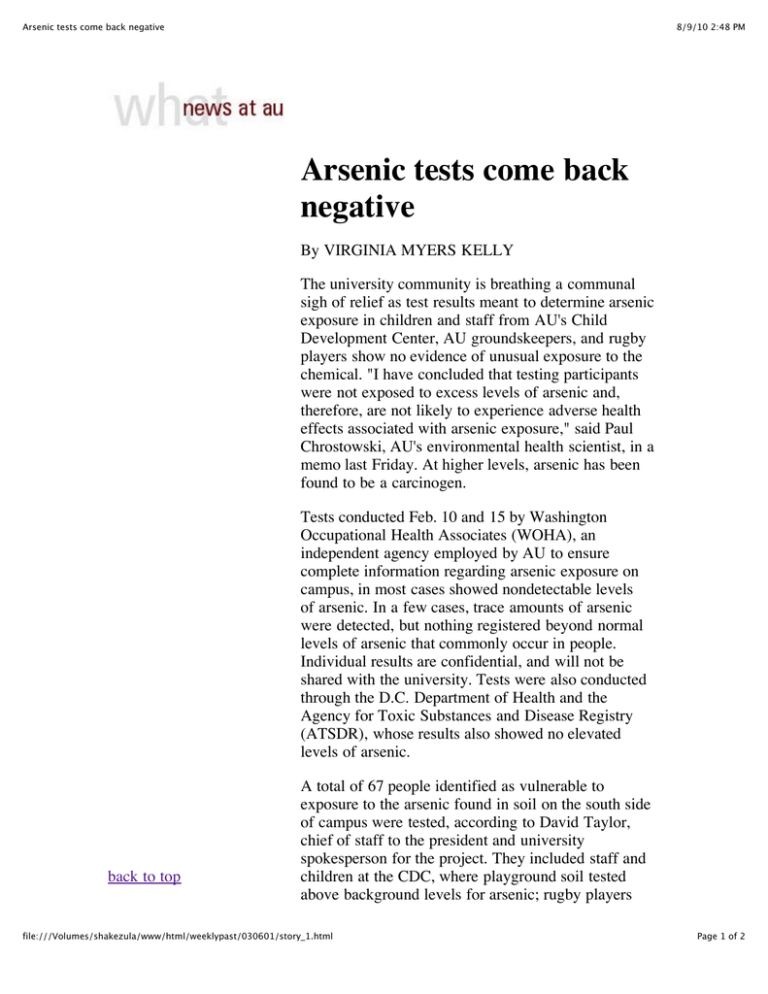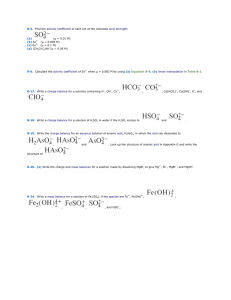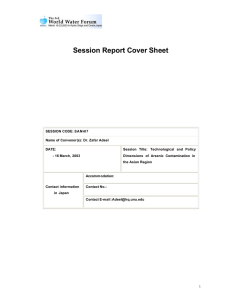Arsenic tests come back negative
advertisement

Arsenic tests come back negative 8/9/10 2:48 PM Arsenic tests come back negative By VIRGINIA MYERS KELLY The university community is breathing a communal sigh of relief as test results meant to determine arsenic exposure in children and staff from AU's Child Development Center, AU groundskeepers, and rugby players show no evidence of unusual exposure to the chemical. "I have concluded that testing participants were not exposed to excess levels of arsenic and, therefore, are not likely to experience adverse health effects associated with arsenic exposure," said Paul Chrostowski, AU's environmental health scientist, in a memo last Friday. At higher levels, arsenic has been found to be a carcinogen. Tests conducted Feb. 10 and 15 by Washington Occupational Health Associates (WOHA), an independent agency employed by AU to ensure complete information regarding arsenic exposure on campus, in most cases showed nondetectable levels of arsenic. In a few cases, trace amounts of arsenic were detected, but nothing registered beyond normal levels of arsenic that commonly occur in people. Individual results are confidential, and will not be shared with the university. Tests were also conducted through the D.C. Department of Health and the Agency for Toxic Substances and Disease Registry (ATSDR), whose results also showed no elevated levels of arsenic. back to top A total of 67 people identified as vulnerable to exposure to the arsenic found in soil on the south side of campus were tested, according to David Taylor, chief of staff to the president and university spokesperson for the project. They included staff and children at the CDC, where playground soil tested above background levels for arsenic; rugby players file:///Volumes/shakezula/www/html/weeklypast/030601/story_1.html Page 1 of 2 Arsenic tests come back negative 8/9/10 2:48 PM who practiced on athletic fields that tested above background levels for arsenic; and groundskeepers who come into regular contact with the soil. Tests were conducted through analysis of hair and, in some cases, urine, to determine exposure within the past year. Current students at the CDC as well as children who attended within the last year were tested. The Army Corps of Engineers, in charge of the investigation and clean-up of arsenic and other chemical elements in the soil, presumed to have been left by World Ward I era chemical warfare testing on campus, continues to test soil behind Hamilton. A patch of lead and mercury is being investigated, though the army considers this to be an isolated incident and not pervasive, according to Taylor. Although testing is still not complete, steps to remove contaminated soil are currently under discussion. For ongoing information about the Army Corps cleanup, see the university's Web site under news and calendars, or go to <www.american.edu/usace/index.html>. file:///Volumes/shakezula/www/html/weeklypast/030601/story_1.html Page 2 of 2





